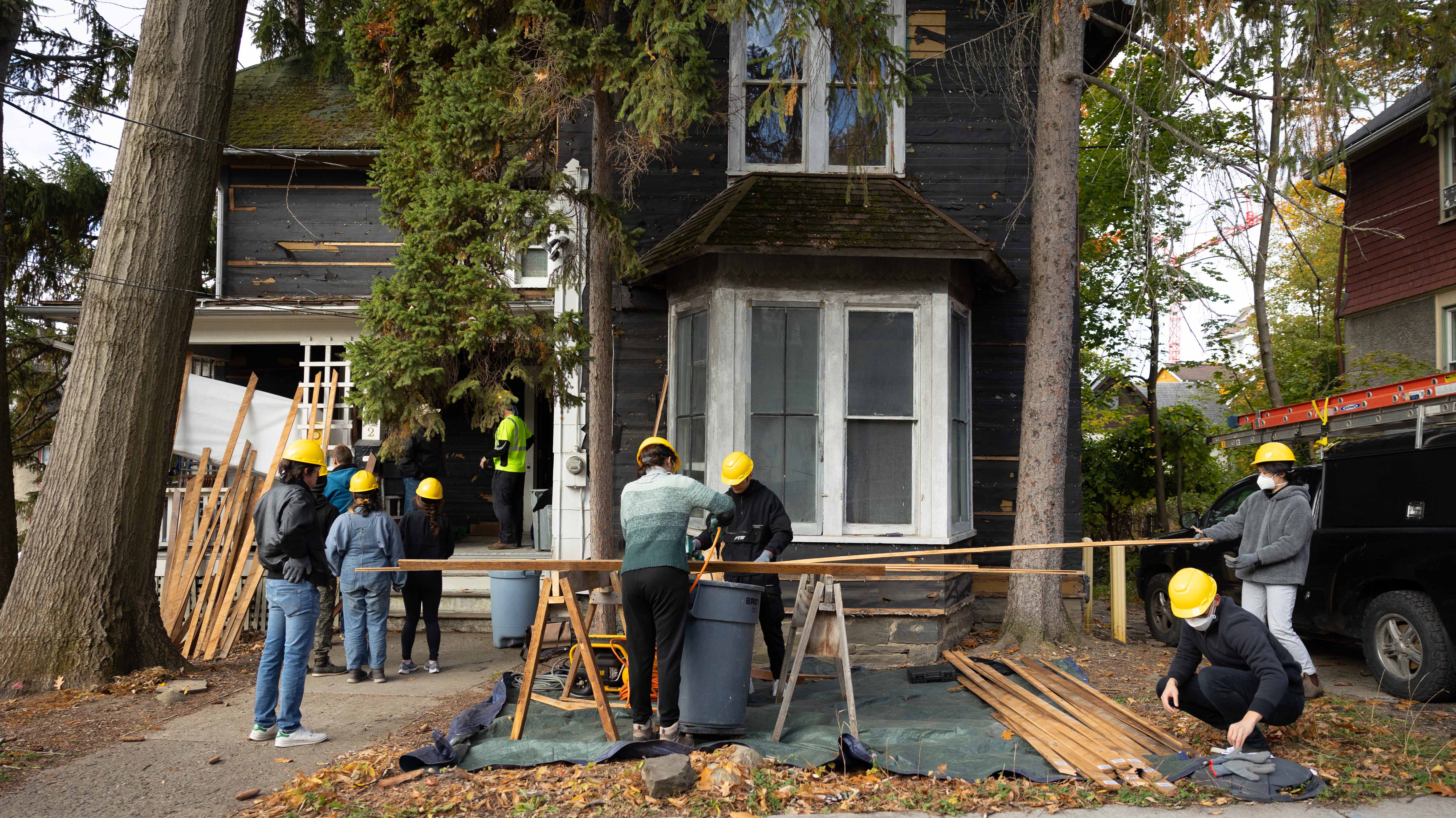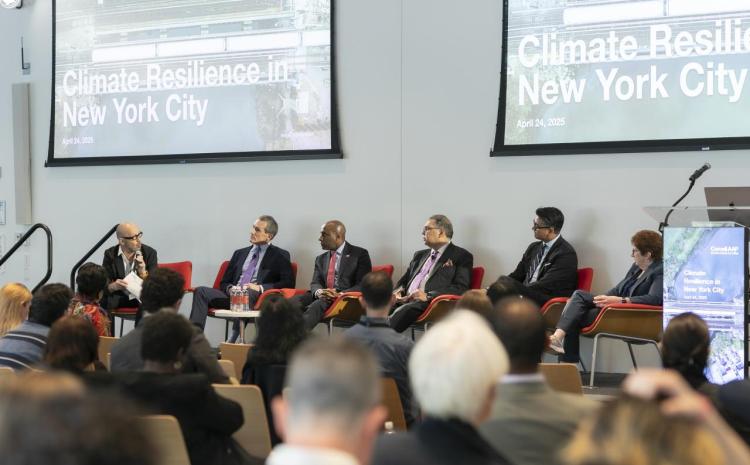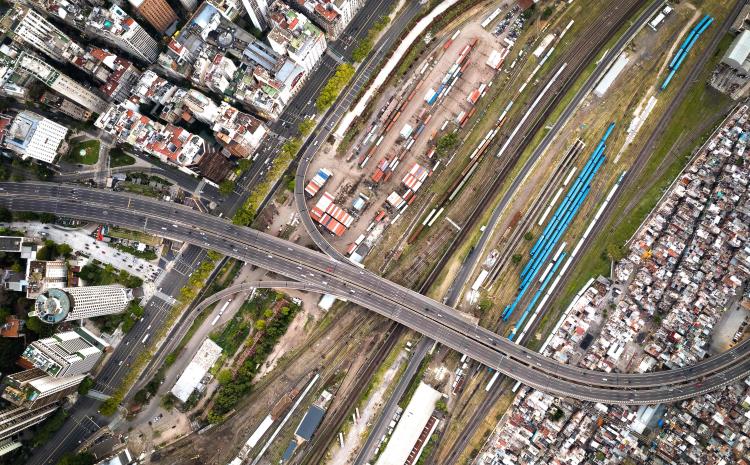Blogs
January 25, 2024
Deconstruction: Rethinking the Building Life Cycle

Cornell architecture students during a Deconstruction Workshop in Ithaca, New York, conducted as part of the Scales of Reuse Option Studio led by Assistant Professor Felix Heisel.
photo / provided
Buildings are a central part of cities. They define skylines, serve as homes, offices, and places of public gatherings, and hold historical significance. Depending on material composition and care, buildings can stand for decades or even centuries. But what happens when buildings need to come down?
In many parts of the world, unused buildings are demolished and the majority of the materials declared waste, with entirely new buildings constructed to take their place. These "waste materials" embody lost carbon, skill, time, and labor. Demolition has negative environmental impacts including contributing to air pollution and raising questions of environmental justice, such as the location of landfills, which are often situated near historically underserved populations. Yet there is a different way of thinking about the material life cycle of buildings and the prevention of construction waste: deconstruction.
Felix Heisel, Architecture Assistant Professor and Director of the Circular Construction Lab, believes that there is a "more equitable and just design approach embedded in [deconstruction]." This is part of the impetus behind the lab, which puts research around circular construction into action, examining the primary questions of how to catalog and extract existing materials from the built environment, and how to reuse these materials in efficient, appropriate, and circular ways.
According to Heisel, deconstruction has the power to address aspects of the climate crisis and equity simultaneously through the creation of a green workforce, facilitating improved abatement of contaminants, producing less pollution and less landfill waste, preserving embodied carbon, and reducing the production of new materials in other places.
With all of these benefits, why then isn't deconstruction common practice? There are a variety of factors at play, Heisel explains. "We don't yet have suitable techniques or skills to get materials out of buildings at scale," he says. "And we are missing marketplace infrastructure to match demand and supply for reuse. Lastly, we don't yet have polic[ies] and codes that support material reuse. There is still a lot missing."
In the existing built environment, it is difficult to determine what materials are in place, or what condition they are in, prior to deconstruction. The original construction plans are often missing or lacking the required level of detail to identify elements, dimensions, layering, and connections, which complicates efforts to gain a comprehensive understanding of the built environment. In most cases, existing buildings were not constructed with reuse in mind, resulting in the use of adhesives and other contaminants that render materials unsuitable for reuse in certain applications.
The Circular Construction Lab is working on ScanR, an application that aims to overcome some of these problems using a combination of LiDAR scanning, image recognition, and archetype construction libraries to estimate material contents and plan better deconstruction practices.
New technology such as UrbanMachine, a robot that uses visual recognition and x-ray technology to detect and remove fasteners (such as nails and staples) and surface finishes from reclaimed wood, can step in to help improve post-processing and recertification for reuse. In combination, such emerging technology will be able to provide detailed material reports that can support design, structural engineering, permitting, and even material procurement before the deconstruction process begins. Looking to the future, Heisel references the creation of "building and materials passports," which provide comprehensive documentation of the materiality and construction of new structures and streamline their deconstruction and reuse process.
However, current legislation, standards, and code limit the amount of reuse happening in US construction. Heisel and City and Regional Planning Associate Professor Jennifer Minner are founding members of CR0WD (Circularity, Reuse, and Zero Waste Development), a New York State stakeholder network established to develop and advocate for zero waste policies. Supported by an Atkinson 2030 Fast Grant, the group is now actively supporting the development of state-level legislation in collaboration with policymakers such as New York State Assembly member Dr. Anna Kelles. Other states, including California, Oregon, and Washington, have more progressive legislation when it comes to deconstruction and material reuse, as does the European Union and many of its member countries.
When it comes to workforce development, organizations such as Ithaca's Finger Lakes ReUse and San Antonio's Material Innovation Center hire and train reuse specialists. City-owned, community-led material reuse centers can provide the physical infrastructure and knowledge to recuperate materials that were formally deemed unusable for reuse, and can serve as models about the role of deconstruction in other communities. "Reuse by definition is a local endeavor [...]. Through reuse, we keep the embodied values of materials and buildings in the community and find ways to distribute those values more equally and where needed," Heisel says.
Heisel emphasizes that building reuse should be the primary goal when transforming the built environment. "Ideally, you don't start with deconstruction, but keep a building in place, because that has the most benefits, both economically and ecologically. If that is not possible, adaptive reuse can reuse at least parts of the building on site. Only if that is also not possible can you deconstruct it to allow for the reuse of its constituent parts elsewhere."






